PatentNext Summary: Software and computer-implemented inventions (CII) have experienced explosive growth in recent years. This article looks at laws of jurisdictions in Southeast Asia, comparing the status of enforcement and protection of software and CII in various Southeast Asia countries.
****
This article is co-authored by Desmond Tan, Amie Khosla, and Ryan N. Phelan.
Desmond Tan is a patent attorney registered to practice in Singapore and has a background in engineering. Mr. Tan is a principal at FPA Patent Attorneys (https://www.fpapatents.com/) and may be reached at desmond.tan@fpapatents.com.sg or by telephone at +65 6956 9943.
Amie Khosla is a patent engineer in the physics and engineering team at FPA specializing in electronic and electrical engineering, physics, quantum computing, and AI and machine learning. She may be reached at amie.khosla@fpapatents.com or by telephone at +61 2 8267 3906.
Ryan Phelan is a registered U.S. patent attorney and moderator of this Blog, PatentNext.
There has been explosive growth in software and computer-implemented inventions (CII), including in specialized areas such as Artificial Intelligence. See, e.g. Artificial Intelligence (AI) Patent Filings Continue Explosive Growth Trend at the USPTO.
It is natural, therefore, that companies seeking to protect their respective innovations in these technologies would seek protection in as many jurisdictions as possible, including in Southeast Asia.
This article looks at laws of jurisdictions in Southeast Asia, comparing the status of enforcement and protection of software and CII in various Southeast Asia countries.
ENFORCEMENT OF PATENT RIGHTS IN SOUTHEAST ASIA
The enforcement of patent rights in Southeast Asia is in a continuous state of evolution, where local law enforcement and customs agencies are becoming adept at goods seizures to prevent the entry of allegedly infringing goods through their respective borders. For example, the Royal Thai police have recovered more than 82,000 counterfeit batteries bearing Panasonic's trademark. While such initiatives in prior years focussed primarily on the stoppage of counterfeit goods, the expertise of the local law enforcement and customs agencies is continually being developed to deal with more complex infringement matters. Accordingly, countries in Southeast Asian companies are developing, and in some ways already have, customs and border enforcement agencies like the United States International Trade Commission (ITC).
Moreover, online marketplace Sellers have a dominant presence in Southeast Asia, where, for example, online market channel leader Lazada has a robust IP protection policy in place to ensure that the products listed on their website do not infringe IP rights. Under Lazada's IP policy, listings with questionable products can be taken down upon provision of grounds by IP owners. This is similar to online Seller takedown policies in the United States, such as the one provided by Amazon, which allows patent owners to request the removal of infringing products from amazon.com via its APEX proceeding. Such marketing channel takedown procedures are especially crucial in Southeast Asia given the prevalence of online commerce in the various regions.
WHERE CAN ONE OBTAIN PATENT PROTECTION FOR COMPUTER-IMPLEMENTED AND/OR SOFTWARE INVENTIONS IN SOUTHEAST ASIA?
The following tables provide a guide pertaining to the laws and filing of applications regarding software, computer-implemented inventions (CIIs), and/or computer-related inventions (CRI) in various Southeast Asia countries.
Indonesia
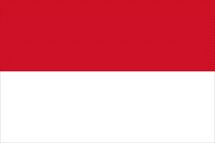
| Is there an Explicit definition of CII in the legislation and/or official guidelines? | Not defined in legislation/guidelines. |
| Is the patentability of computer programs per se allowed? | Law No. 13 of 2016 (New Patent Law) excludes rules and methods that only contain computer programs from patent protection. |
| General approach to patenting Software and Computer-Implemented Inventions | Examiners should ascertain whether computer programs provide a technical effect and function so as to produce a solution to a problem when determining whether an invention may be patentable. |
Malaysia
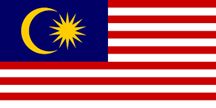
| Is there an Explicit definition of CII in the legislation and/or official guidelines? | Not defined in legislation/guidelines. |
| Is the patentability of computer programs per se allowed? | Computer programs as such and compilations of computer programs may be protected under the Copyright Act 1987 as a literary work. |
| General approach to patenting Software and Computer-Implemented Inventions | The invention must meet the statutory definition of an "invention" – it must solve a technical problem. A computer program may be patentable if the claimed subject matter makes a technical contribution to the art. |
Philippines
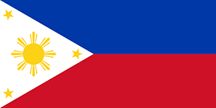
| Is there an Explicit definition of CII in the legislation and/or official guidelines? | The Guidelines on the Examination of ICT define CRIs/CIIs to be inventions involving computers, computer networks or other programmable apparatus whereby prima facie one or more of the features of the claimed invention are realized by means of a program or programs. |
| Is the patentability of computer programs per se allowed? | Section 22.1 of the Republic Act No. 8293 (IP Code) excludes "programs for computers" from patent protection. |
| General approach to patenting Software and Computer-Implemented Inventions | Section 21 of the IP Code defines a patentable invention as "any technical solution of a problem". Thus, CIIs/CRIs may be patentable if it is determined to include technical character, which is defined in the Guidelines on the Examination of ICT as "the kind that involves a technical teaching, i.e., an instruction addressed to a skilled person as to how to solve a particular technical problem using technical means". |
Singapore
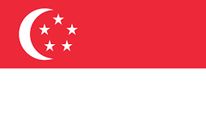
| Is there an Explicit definition of CII in the legislation and/or official guidelines? | Not defined in legislation/guidelines. |
| Is the patentability of computer programs per se allowed? | Section 8 of the Patent Examination Guidelines does not define any exclusion for software inventions. |
| General approach to patenting Software and Computer-Implemented Inventions | Section 8.6 in the Patent Examination Guidelines states that claims relating to CIIs/CRIs must be examined to "determine the extent to which the computer (or other technical features) contributes to the invention defined in the claims". Furthermore, "it must be established that said computer (or other technical features), as defined in the claims, is integral to the invention in order for the actual contribution to comprise said computer (or other technical features). |
Thailand
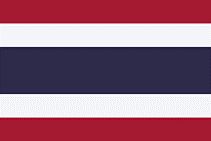
| Is there an Explicit definition of CII in the legislation and/or official guidelines? | Not defined in legislation/guidelines. |
| Is the patentability of computer programs per se allowed? | Section 9.3 of the Patent Act (No. 3) B.E. 2535 1999 defines the exclusion of computer programs under the patent regime. |
| General approach to patenting Software and Computer-Implemented Inventions | CIIs/CRIs may be patentable if it is technically designed to work with or lead to improvement of a specific device/machine but not for a regular computer. |
Vietnam
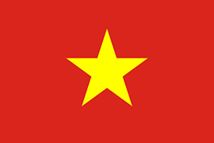
| Is there an Explicit definition of CII in the legislation and/or official guidelines? | The Guidelines for Patent Examination define CIIs as an invention involving the use of computers, computer networks, or other programmable apparatus whereby prima facie one or more of the features of the claimed invention are realized wholly or partly by means of a program(s). |
| Is the patentability of computer programs per se allowed? | Article 59 of the IP Law excludes "computer programs" from patent protection. |
| General approach to patenting Software and Computer-Implemented Inventions | CIIs/CRIs may be patentable if it has a "technical character, and is a technical solution for solving a technical problem by a technical means to attain a technical effect". |
SOUTHEAST ASIA'S ROBUST ECONOMY IS RIPE FOR PATENT
PROTECTION
Southeast Asia is a historically and culturally diverse region of the world that covers nearly 700 million people. The GDP of the region in 2021 was $3.3 trillion (US dollars). The top three foreign jurisdictions investing within Southeast Asia are the US, EU, and China, respectively, as shown in FIG 1 below. Southeast Asia is collectively the third-largest economy in Asia and the fifth-largest economy in the world. Globally, Southeast Asia accounts for nearly 7% of the global GDP.
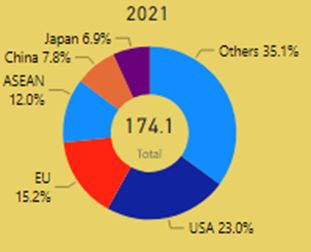
FIG. 1
The top three foreign jurisdictions consuming exports from Southeast Asia are China, the US, and the EU, respectively, as shown in FIG 2 below.
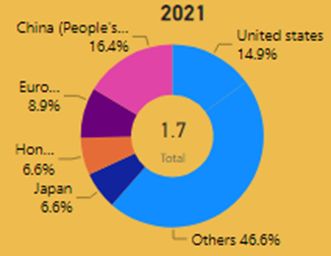
Fig. 2
Based on the preceding Figures, it is evident that from a country perspective, the US, the EU, and China have substantial involvement in the economic environment in Southeast Asia.
The population size of Southeast Asia illustrates a strong case for protecting intellectual property assets in the region. In particular, Figure 3 illustrates goods and services imported by the nearly 700 million people of Southeast Asia in 2020. Of particular interest in FIG 3 is a 7.2% import of "charges for the use of intellectual property." This category defines "import" payments for the use of intellectual property of foreign companies.
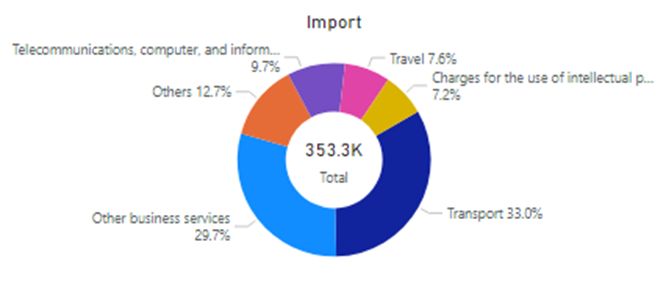
FIG. 3
In 2018, the total amount was $373.8 billion (US dollars), where at 7.2%, the category "charges for the use of intellectual property" amounted to approximately $27 billion, a significant amount spent for intellectual property in the region. See Trade in Services in ASEAN.
The content of this article is intended to provide a general guide to the subject matter. Specialist advice should be sought about your specific circumstances.

